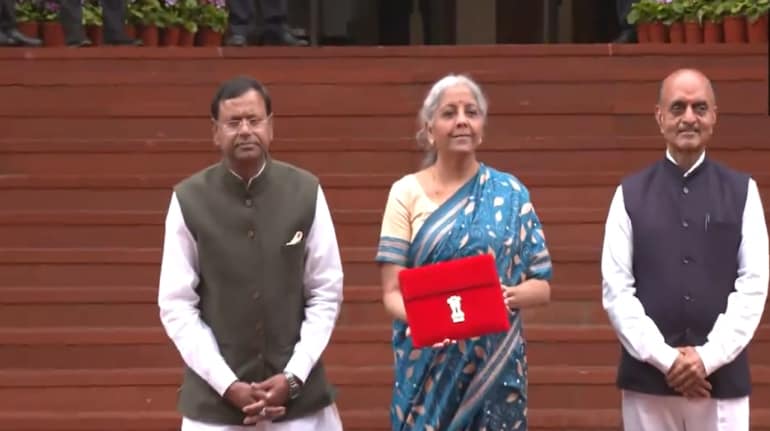
A pandemic-driven plunge and then a base effect driven rise. In the midst of that, a second wave of Covid-19 infections, which interrupted a recovery which had just about begun.
With each of those elements playing into the first quarter gross domestic product data released by the government on Tuesday, deciphering underlying trends in the economy has been difficult.
Most economists are looking through the 20.1% year-on-year growth in GDP. However, simply comparing quarter-on-quarter data is also misleading due to seasonal factors. As such, the seasonally adjusted quarter-on-quarter data is being seen as the best judge of the impact that the second wave of Covid-19 infections had on the economy.
Using the lens of quarter-on-quarter seasonally adjusted numbers, the economy contracted in the April-June quarter compared to an expansion in the previous three months.
On a seasonally adjusted sequential basis, GDP contracted by 6.3% in the June quarter, following a 2.4% growth in the March quarter, said Pranjul Bhandari, chief economist at HSBC India.
The seasonally adjusted numbers differ slightly from economist to economist as methodologies vary. The conclusion though remains similar.
Similar to Bhandari, Aurodeep Nandi, India economist at Nomura, also pegs the quantum of hit during the second wave at a third of what was seen last year. "The broad narrative that it has been a light touch hit to the economy stands true even after this data release," he said.
Using the same lens of quarter-on-quarter seasonally adjusted data, consumption fell by about 9% in the first quarter, said Nandi. This compares to over 3% growth in the preceding quarter and a drop of 22% in the year ago quarter.
Private consumption has been the weakest, said Bhandari.
”When we look at the quarter-on-quarter metrics, there is a degrowth of 17.4% (in private consumption). And if we compare with Q1 FY20, the degrowth is 11.9%. Thus, the recovery has not happened as Indian households faced the brunt of second wave in Q1,” said Soumya Kanti Ghosh, chief economist at SBI Economic Research.
Seen another way, there has been a sharp fall in the share of consumption in GDP by about four percentage points, said Alok Sheel, RBI chair professor in macroeconomics at ICRIER.
Fixed investment, too, fell by over 15%, said Nandi.
Exports, however, provided a boost. "Exports have been most buoyant, surpassing pre-pandemic levels by a large margin," said Bhandari
Government spending was surprisingly weak during the quarter, said Kaushik Das, chief India economist at Deutsche Bank.
Das, who prefers to look at year-on-year numbers, pointed to the fact that government consumption expenditure, declined 4.8% year-on-year in the quarter ended June compared to a 12.7%-increase a year ago.
The July fiscal data, too, showed that expenditure was down 23% over a year ago. "While government expenditure may pick up meaningfully in the second half, it will not be as strong as we had earlier anticipated," Das said.
According to Bhandari, industry, where the contraction was 16% of last year’s, has been more resilient than services, where the contraction was 54% of last year.
"The gap between India’s tradeables and non-tradeables GDP widened from a sequential standpoint, with the latter bearing the bigger brunt of the second virus wave, contracting by 18.5% quarter-on-quarter seasonally adjusted, while tradeables declined by 2.9%," according to estimates by Rahul Bajoria, chief India economist at Barclays.
Another way to look at current output is to compare it to pre-pandemic levels.
GDP had just surpassed pre-pandemic levels (101 %) in Q1, but the second wave meant GDP was back down to 95% of pre-pandemic levels in Q2, said Sajjid Chinoy, chief India economist at JPMorgan.
Chinoy, however, added that 18 months into the pandemic, the utility of using “pre pandemic levels” as the relevant benchmark is fast losing relevance. To capture the true economic cost of Covid-19, the benchmark must change to what the level of activity would have been absent the pandemic (i.e. the counterfactual).
"Consequently, the level of output in Q2 was almost 12% below a hypothetical pre-pandemic path, though it will make-up some of these losses as activity recovers in subsequent quarters," he said.
In year-on-year terms, JP Morgan is expecting FY22 growth at 8.4%, lower than its earlier forecast of 9%. "This would also mean that the level of GDP is about 6% lower than its pre-pandemic path by the end of this fiscal year."
Following the first quarter data, some economists have downgraded their full-year estimates. Others, who has pegged down their estimates fearing a steeper hit have, in contrast, raised them.
"We revise down our FY22 growth forecast to 9.5% year-on-year, as government expenditure momentum remains weaker than we anticipated, while retaining our FY23 growth estimate of 6.0% year-on-year at this stage," said Das.
In contrast, Barclays raised its GDP growth for the full financial year to 10.2%, compared to a previous forecast of 9.2%.
Did It Rise? Or Did It Fall? Making Sense Of Q1 GDP Data - BloombergQuint
Read More

No comments:
Post a Comment